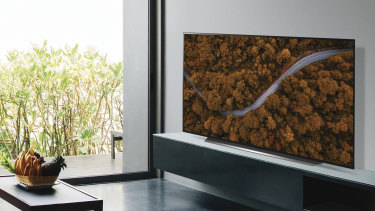You might want to wait on new HDMI cables for your new TV
You might want to wait on new HDMI cables for your new TV
By Krishan Sharma
In preparation for the next generation of game consoles, I recently upgraded to LG's 77-inch CX OLED television for my dedicated media room. Aside from the astounding picture quality, the reason I went with the CX is that it is the only TV on the market to offer four HDMI 2.1 ports, which will enable me to run the Playstation 5 and Xbox Series X, as well as my trusty PC, with all of the bells and whistles.
As it turns out, the display was the easy part. Knowing which HDMI cables to use was another matter altogether.
HDMI 2.1 is the biggest leap forward since HDMI became the de facto standard for connecting anything to your television over a decade ago. The data bandwidth of its predecessor, HDMI 2.0, maxes out at 18Gbps (gigabits per second), while HDMI 2.1 widens the pipe to a whopping 48Gbps.
While HDMI 2.1 can go as far as supporting 8K and even 10K resolution content, the more exciting aspect is what it will deliver with the growing 4K library. The ability to run 4K games with a variable refresh rate of up to 120 frames per second is a literal game changer, for example.
Displaying UHD images at 120fps could also benefit some movie and TV content — think action films, nature documentaries and sports — to which higher frame rates can lend a clearer image in fast-moving scenes. Meanwhile HDMI 2.1 also enables eARC, so you can finally pipe the best possible sound from devices connected to your TV through to your speakers.
In order to take full advantage of HDMI 2.1 you're going to need to buy new "ultra high speed" HDMI cables, but the problem is that there won't be any officially certified ones in the market until later this year. The ultra high speed cables currently being sold in stores might or might not work, as they haven't been officially tested to support all of the new features.
"Any cable manufacturer can claim 48Gbps support, but they cannot claim compliance to the HDMI 2.1 specification," said Brad Bramy, VP of Marketing for the HDMI Licensing Administrator.
"While I can't comment on all the different cables in the world, it is a risk to buy cables that are not compliant to the HDMI 2.1 spec."
Bramy said that HDMI 2.1 uses an entirely new signalling technology that requires much more sophisticated testing to ensure cables deliver all the features supported by the standard. He claimed that officially certified UHS cables are also less likely to affect other wireless devices in the home.
However, cable makers are standing by their products. Chris Lau, whose company Laser sells a non-certified ultra high speed cable in Australia under the G-TEK and Connect brands, said his certified cable will launch in October but consumers didn't need to wait.
"Any customer who purchases an ultra high speed cable now and finds that it is not compatible with future 2.1 devices, we will replace or update free of charge," he said.
If you're buying a HDMI 2.1 television today or already own one, and you want to ensure everything just works, then it would make sense to wait for officially certified versions before upgrading your cables. In truth, there isn't really a reason to buy one now as there is such a small number of HDMI 2.1 devices currently on the market.
But if you're like me you have your TV wall-mounted, and don't fancy the idea of having to rip a large TV off the wall again so you can install new cables in a few months. I tested a mixture of branded and generic 2.1 cables and so far found features including eARC, auto low latency mode and variable refresh rate worked reliably.
How the non-certified cables hold up with more bandwidth demanding devices, such as the next generation consoles, remains to be seen.

 Australian Dollars
Australian Dollars


